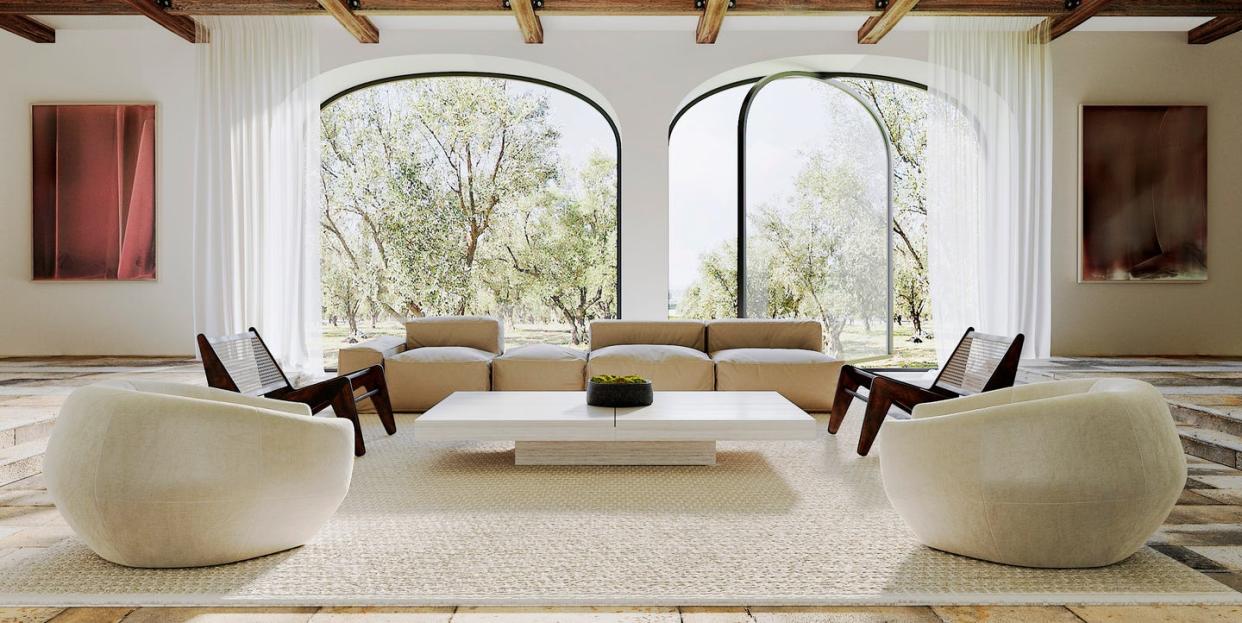Interior design tips from emerging star Miminat Shodeinde…

Based in London’s Great Portland Street, British-Nigerian designer Miminat Shodeinde has built a dazzling portfolio of international projects at the tender age of 27. She studied interior and spatial architecture at Heriot-Watt University in Edinburgh and set up her business in 2015, while still studying.

What drives this precocious talent? ‘I love creating beautiful things, and I see interiors as an extension of that,’ she says. Despite ‘always knowing she would end up in a creative field’, she studied advertising for a year before switching to interior design. ‘From that moment, I knew it was for me,’ she explains. ‘I think there’s more than one typical route to success. I didn’t have a mentor or connections. In some senses, I’m self-taught, and a lot of what I do is trial and error but, above all, I have passion and determination.’
What’s her style? ‘If I had to sum it up, I’d say, “refined elegance”,’ Shodeinde reflects. Her spaces have a sense of grandeur and light, and a serene presence born of their monumental furnishings, many of which Shodeinde creates herself. Her furniture, lighting and objects are influenced by things that fascinate her, including nature, travel and aeronautics.
She lists modernist titans Oscar Niemeyer and Mies van der Rohe among her inspirations, and her work blends European and African elements. Preferred materials include oak, mahogany, natural stones, brass and bronze, which are layered together for an air of sensory indulgence.
‘Clients often describe my style as laid-back luxe,’ says Shodeinde. ‘In some ways, my work is brutalist, but it’s also soft and feminine.’

What are her recent projects? An elegant home in London’s Westbourne Grove centres on texture, warmth and light. Shodeinde created an atmospheric ceiling installation in the dining room using her ‘Jude’ pendant, a jewel-like piece that combines tinted polycarbonate with polished brass. Miminat Designs has masterminded projects as far afield as Nigeria, Cape Town and Provence; the latest addition is Kuwait, where the studio is revamping a six-storey home using custom-made pieces on an ambitious scale. These include a three-metre-high edition of her steel, brass, mahogany and leather ‘Rina’ cabinet.

What is she currently working on? Next on Shodeinde’s schedule is a 12-room villa in Ericeira, Portugal, which she is transforming into a Japanese-inspired home. Her design, focusing on the play of light and shadow and blurring boundaries between indoors and out, also has a mountain path leading up to the villa. Shodeinde was inspired by Shinto philosophy and the zen principle of kanso, which signifies simplicity and restraint. She explains, ‘I’ve never designed a Japanese home before but it’s an exciting challenge, as a lot of my work is inspired by its culture.’
She says ‘I’m in between “less is more” and “more is more”. I don’t tend to use patterns, but I feel colour should always add light and lift a space, while texture should add dimension.’ miminat.com
Expert advice
Miminat Shodeinde’s tips on how to bring warmth to contemporary homes
1 Reframe your thinking and imagine textures as flavours, mixing and matching them as you would when cooking a special dinner. Only pick ingredients you love. I add depth by juxtaposing unusual textures: soft bouclé wools, supple creamy leathers and rough woods or metals.
2 Look to your favourite landscapes for inspiration. Bring those hues into your home and they will build a sophisticated connection with the outdoors. Colour should lift a space – for a project in Malaga, I used a rich blue shade to adorn a set of chairs. While the effect was subtle, it created a focus for the eye.
3 Sensory lighting has the power to alter the mood of a space, especially in the darker months. For a recent project in London, I designed a series of large-scale light fixtures to create a warm environment. A polished-gold finish added a dose of relaxed luxury.
4 Artistic flair can be achieved by embracing imperfections. A much-loved piece with an interesting appearance can show you the maker’s mark, or the way it has evolved over time. Don’t be afraid to select things with slight flaws – I love using metal in this way.


